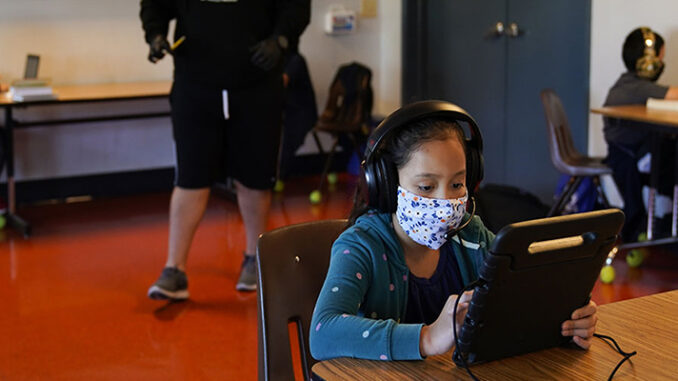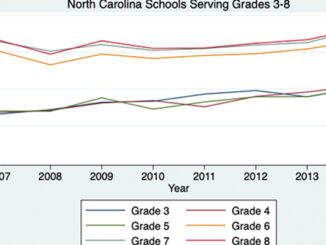
The highest increases are occurring in the transition years of grades six through nine and in second through fourth grade.
by Linda Jacobson
This article was originally published at The 74.
Eleven districts in California are seeing an 89 percent surge in chronic absenteeism among students in elementary grades compared to last year at this time, according to new data presented to the California Department of Education.
That means nearly one in five students has missed 10 percent of school so far this year. But the districts in the sample are part of an initiative to increase attendance and generally have low absentee rates. Based on how those figures usually compare to other districts across the state, the increase could be as high as 220 percent statewide, said Erica Peterson, the national education manager with School Innovation and Achievement, which works with 33 California districts serving 330,000 students. The districts are in counties that include Los Angeles, Riverside, and Santa Clara, in the Bay Area.
Districts in the sample that include only high schools are seeing a 42.5 percent increase in chronic absenteeism — estimated at 95.7 percent statewide — and there is a 57.8 percent increase for unified districts in the sample (that include all grades, or 141.9 percent statewide). Among racial groups, the increases are highest among Black and Hispanic students, reinforcing that remote learning has disproportionately hurt students of color.
The highest increases are occurring in the transition years of grades six through nine and in second through fourth grade, Peterson said.
“Those early formative years where reading skill acquisition happens are greatly impacted,” Peterson said Tuesday on a webinar co-hosted with Attendance Works, a national nonprofit that focuses on reducing absenteeism. “Traditionally, those early grades usually have the lowest absentee rates. Now we’re seeing some of the highest.”

A first look at how the disruption to education caused by the pandemic is impacting attendance this fall, the data confirms multiple reports since last spring of students across the country not logging on to remote classes. While Chang said national chronic absenteeism data is not yet available, School Innovation and Achievement’s figures are likely representative of what’s happening in other states.
But the data also underscores that the ways in which some schools track attendance isn’t adequately capturing the variety of reasons students are skipping out on remote learning. Experts said it’s important that communication to families about attendance adopt a helpful, rather than harsh, tone in order to keep students engaged.
“It’s always been true that kids need enrichment to want to come to school,” said Hedy Chang, the director of Attendance Works, adding that if districts are seeing high levels of absenteeism, it’s important to increase activities, such as clubs, home rooms, and sports. Just this week, for example, the Los Angeles Unified School District began allowing student athletes to return to schools for sports conditioning.
Fundamental changes in tracking attendance
With distance learning likely to continue for many students even when schools fully reopen, it’s important, Chang said, for districts to think about ways to make it easier for teachers to record attendance and class participation data in technology platforms they are using for live lessons and giving students assignments, rather than using separate software.
“Teachers have more on their plate than ever before,” she said.
In the Panama-Buena Vista Union School District, near Bakersfield — part of School Innovation and Achievement’s Attention 2 Attendance initiative — some schools were recording students present even if they weren’t really participating. One school that normally has an absenteeism rate of 8 percent was down to 1.6 percent.
That was a red flag, Randy Miller, an administrator in the district, said during the webinar.
“If the kid logged in for two seconds, they got counted for being there,” he said. “The numbers are ugly, and we needed to face it head on. We had to go back in and have a come-to-Jesus meeting with them and say this isn’t going to fly.”
The district has also made changes to its tracking procedures to more accurately capture when technology issues are the reason for students not attending class. They’ve added “[Distance Learning] Tech Issues” as one of its excused absences, for example, to indicate that the student couldn’t participate because he or she didn’t have a device or had problems using one. New unexcused codes were added for students who couldn’t be contacted and those that were contacted, but refused to participate.

Both Miller and Brian Campoy, the director of innovative programs for the Kern High School District, said it’s still important to send letters to parents urging students to attend class , but to provide support if families need it.
By the end of October, Campoy said his district sent over 36,600 letters to parents. Of the 20,000 unexcused absences in that group, 11,000 still needed a second letter.
“Without looking at this data,” Miller said, “we’re only guessing what the issues are.”
Linda Jacobson is a senior writer at The 74.



